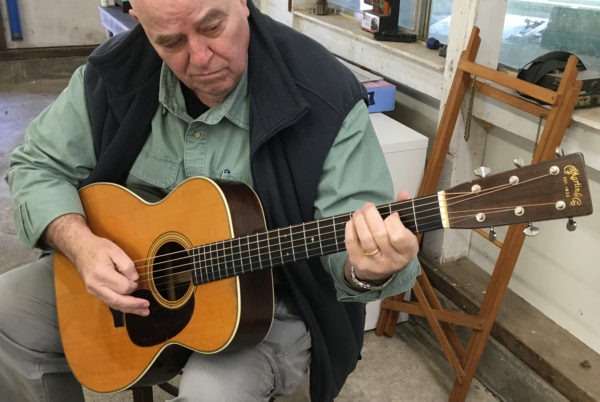
With all the instruments that come through the shop, what does it take to stand apart from the crowd? Age, design, construction quality, sound—any one of these could be enough. Then there are times when several factors coalesce in a way that might not be possible again, and are so completely satisfying that no improvement is necessary.
Take the Stradivarius violin for example. There have been books written on the Stradivari violins and their place in history, and I am certainly no expert, but I will note a few defining details. Stradivari, through experimentation and evolution, designed a violin that would carry in the larger orchestras of the time, and would work well with the new music being written. Stradivari’s craftsmanship was superb. The joinery was clean, the inlay flawless and the shape beautiful. There are many material theories to try and explain the sound – different wood treatments, type of varnish, etc – but a recent “Little Ice Age” theory looks at how global low temperatures stunted tree growth, producing unusually dense wood. This theory has been tested by x-ray, which has shown that the instruments have extremely even and dense grain. These factors, Stradivari’s genius and craftsmanship, the climate of music at the time pushing his design, and the abundance of stellar wood, all made this famous instrument possible, and also very hard to improve upon.
This 1931 Martin OM-28 is another example of this type of coalescing. At the time this OM was built, Martin was staffed with seasoned craftspeople, as the factory itself had been in operation for almost 100 years. Martin had been constantly evolving their instruments, both to keep up with changing musical styles, and to help drive sales in post depression America. This evolution resulted in the OM model having 14 frets clear of the body, the long 25.4″ Martin scale and the OM body size, the combination of which resulted in a robust sounding and versatile instrument. The bar frets stiffen the neck as well, helping with tone transfer. Additionally the quality of the wood was seriously tops. There would have been no regulation of logging in the Amazon, so guitar companies were able to use flawless Brazilian rosewood, as evidenced on the model pictured. The ebony is jet-black and the spruce is straight grained.
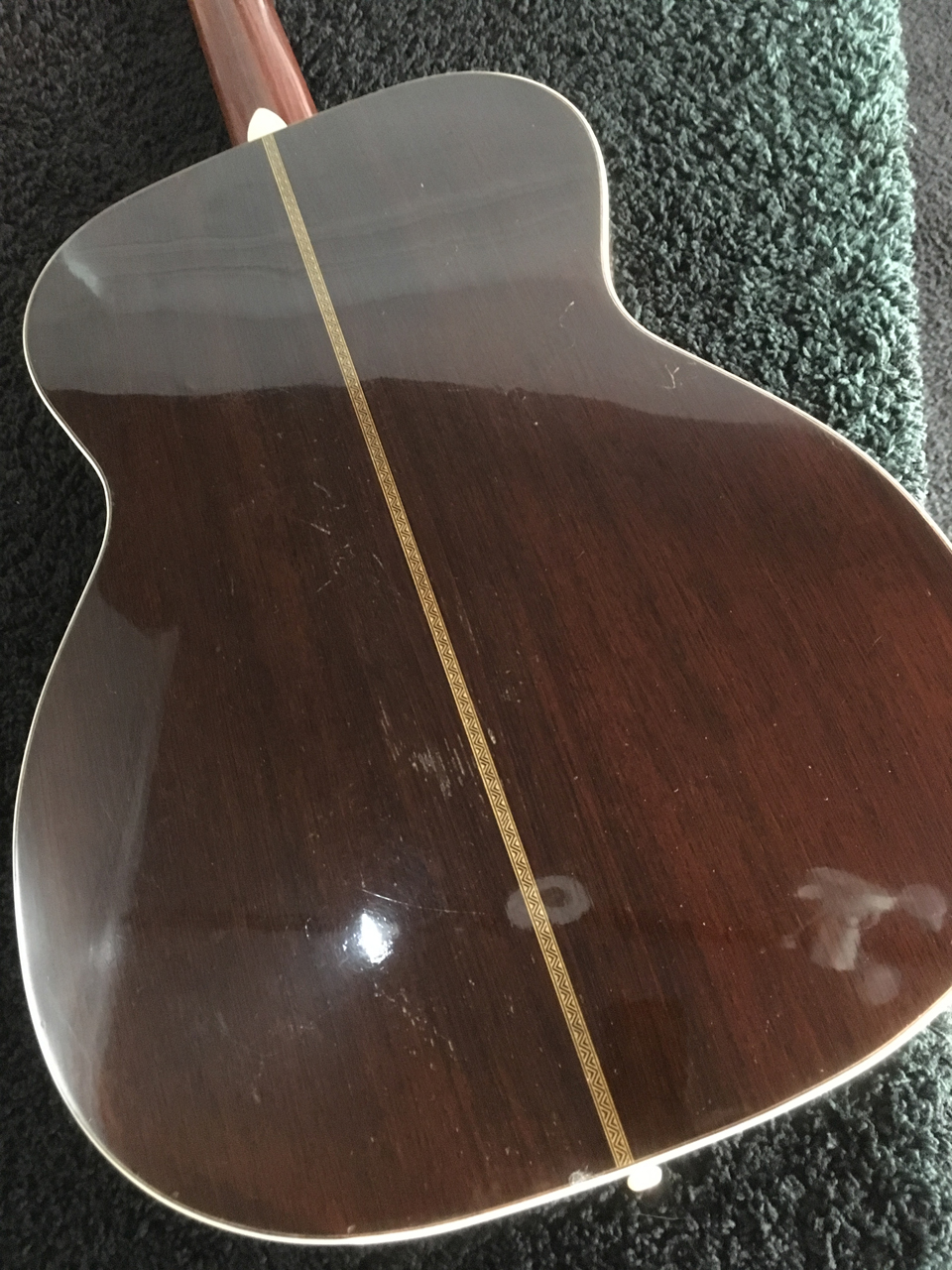 | 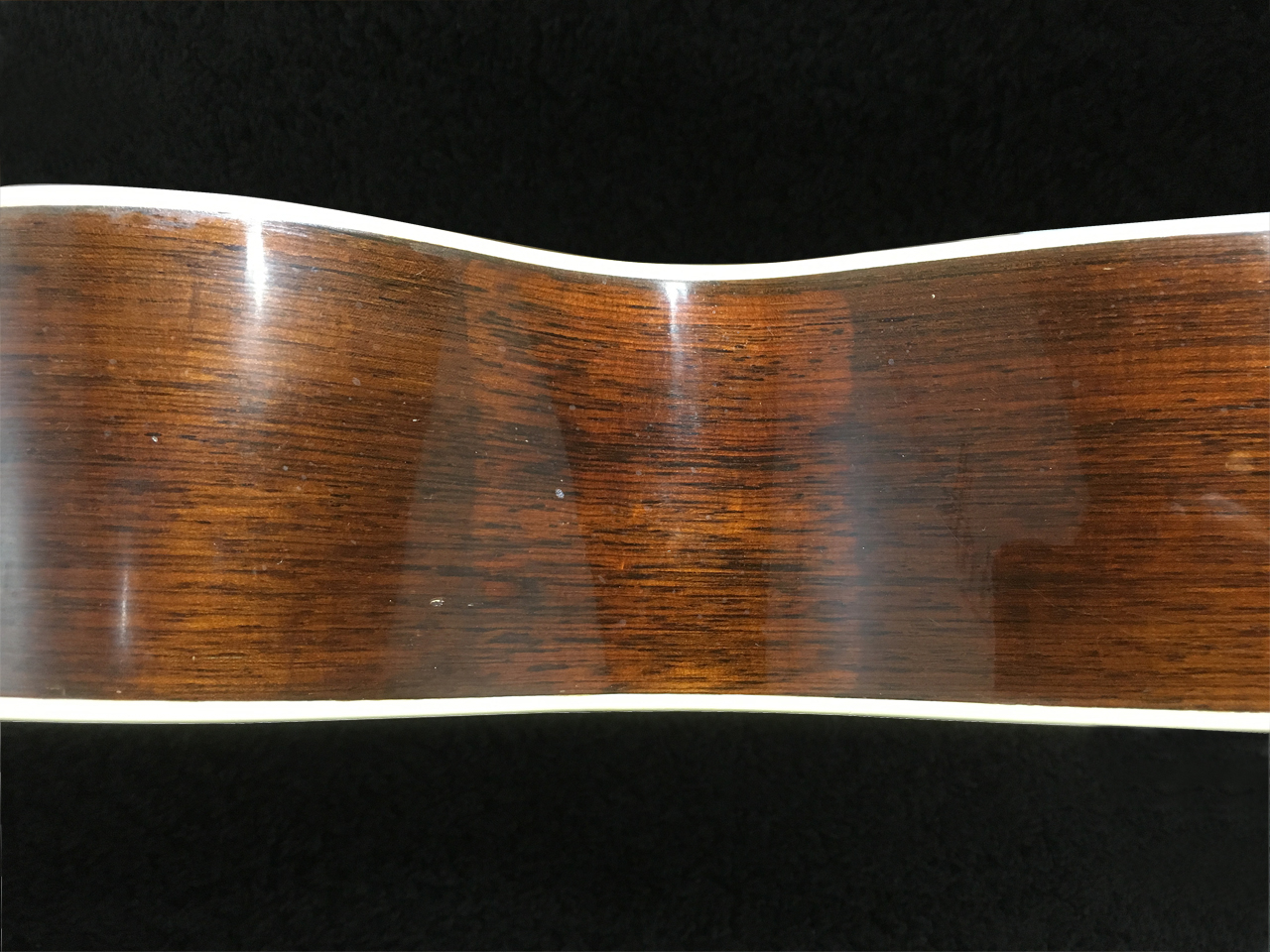 | 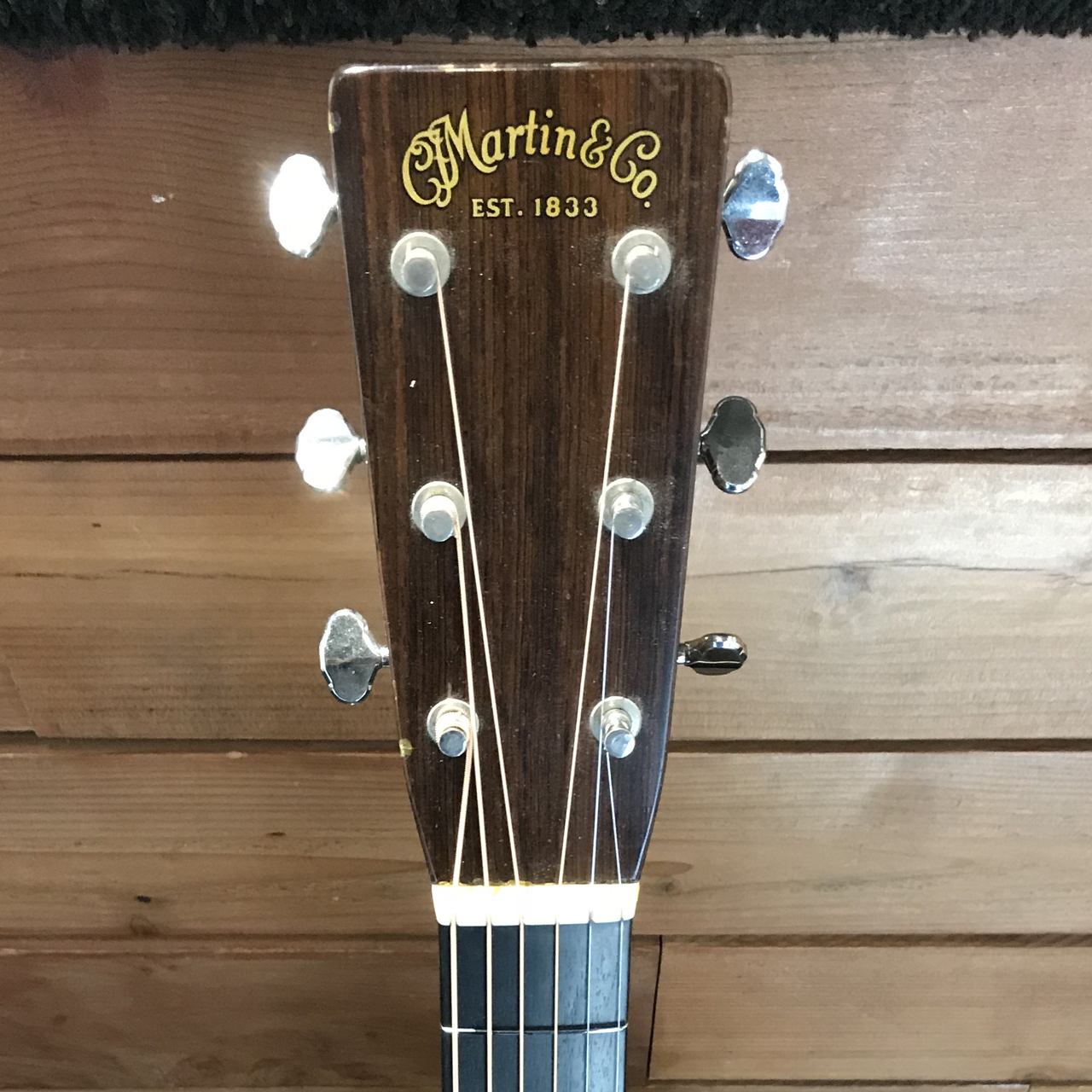 |
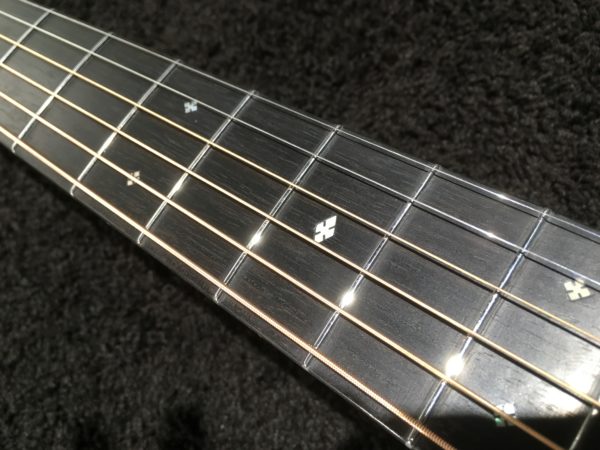
The guitar was a joy to work on, being in excellent original condition. It was brought in because the action was very high, and it had a significant amount of fret buzz, so it definitely needed fretwork. On a Martin with bar frets such as this, standard procedure is to lift any low frets, then level the frets. This is where our Plek machine really shines. I was able to scan the fretboard, which showed the height of each individual fret, then I lifted any low frets, glued them and cut all the frets to level. The frets were then hand crowned to bring them back to the original profile. The action was lowered and the guitar played as good as any, and had a sound that was truly beyond the reach of almost any guitar.
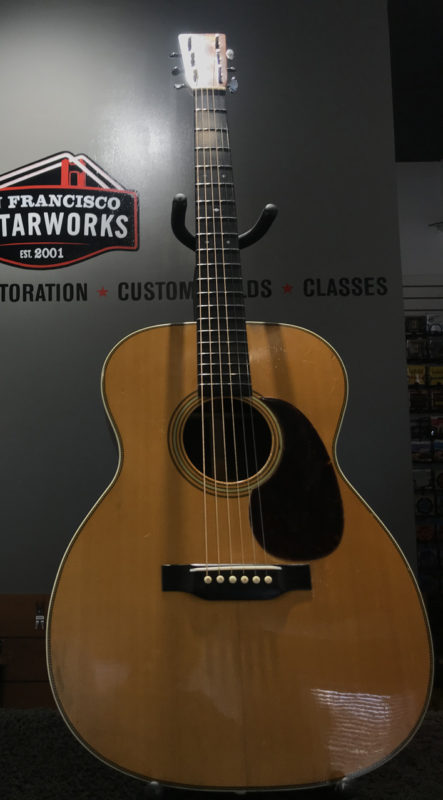
Working on a guitar like this, iconic, almost 100 years old and ready for another 100 gives me a sense of the permanence of our choices in light of our own impermanence. What choices am I making today that will have ramifications beyond my current physical form? Will these ramifications be positive or negative? I wonder if the Martin techs who crafted this guitar had any of those thoughts, or was it just another day at the office? Either way, any time I work on a guitar like this, my day at the office becomes a little brighter.


